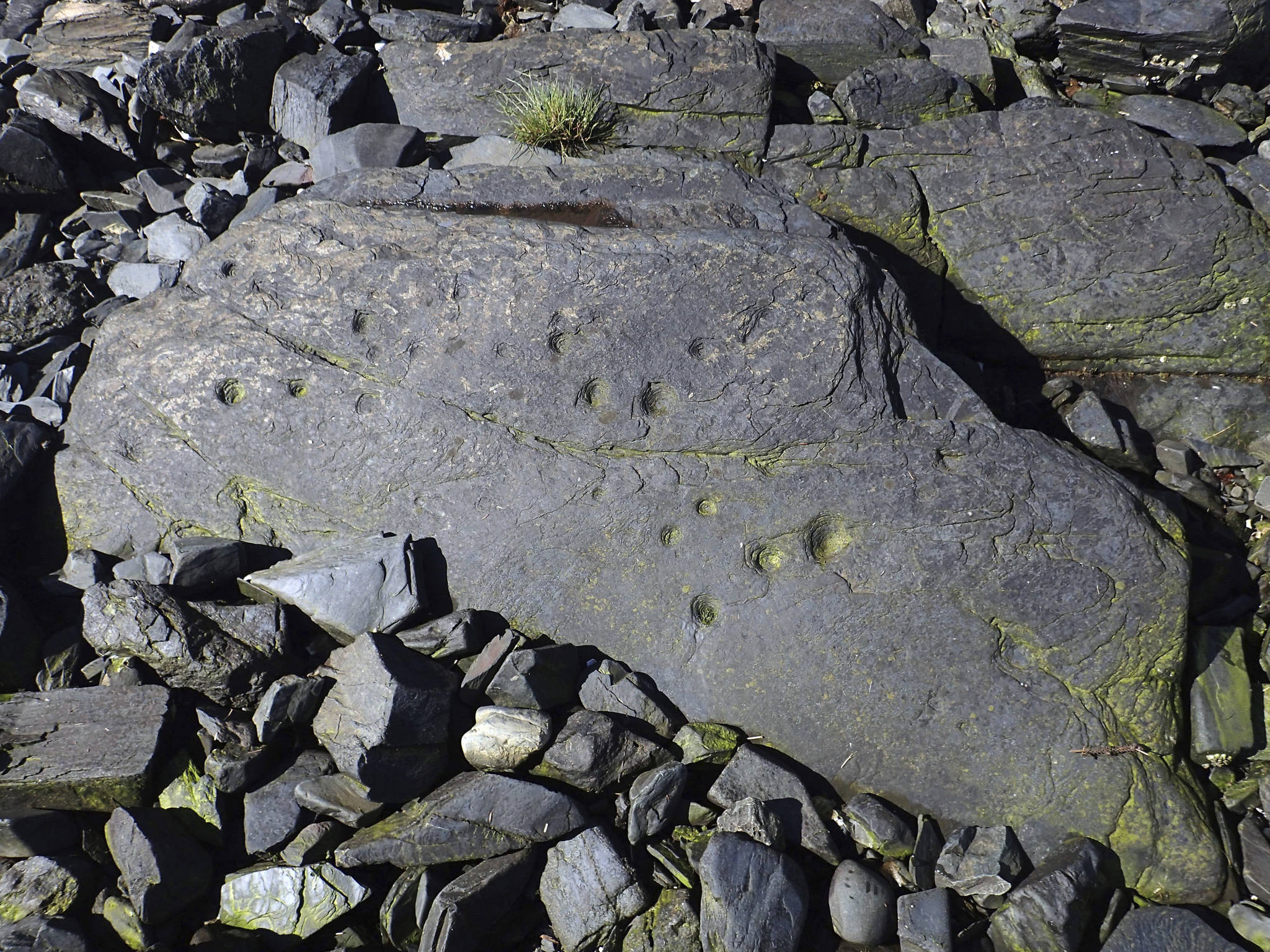KODIAK (AP) — Archaeologists have discovered a prehistoric fish trap constructed of rock walls near the mouth of a salmon stream on Kodiak Island.
The trap is in a lower intertidal zone that’s covered by ocean water at high tide and exposed at low tide, the Kodiak Daily Mirror reported Tuesday.
Archaeologists at the Alutiiq Museum in the city of Kodiak identified the trap. Salmon at high tide could swim into the stream, and when the tide receded, fish would be stranded in one of two corrals, said Patrick Saltonstall, the museum’s curator of archaeology.
Prehistoric fish traps previously have been found in streams on Kodiak, the second largest island in the United States, Saltonstall said. The V-shape devices faced upstream and channeled salmon to a spot where fishermen could spear fish. Saltonstall had not seen an ocean trap on Kodiak before.
“These are the first ones we’ve found in the intertidal zone, and that’s kind of exciting,” he said.
The trap reminded Saltonstall of stone walls of a New England farm.
“They’re pretty big piles. They’re like four or five feet across. They’re stacked,” he said. Wood or netting may have helped capture fish.
One corral was roughly rectangular. Farther from shore was a U-shape corral. Together they stretched about 165 yards (150 meters).
The trap is not in shape to catch fish now.
“The walls have gotten too low and they’re too many gaps,” Saltonstall said, likely from tides knocking down rocks over centuries or silt covering the base. Large rocks anchor the trap but most rocks, weighing around 80 pounds (36 kilograms), would have been carried and stacked by hand.
“That brings up an important point,” he said. “These things would have to be maintained,” which makes it likely the trap was tended by multiple families or a village.
Stone traps and wooden weirs have been found from southeast Alaska to Oregon, Saltonstall said, including some used as fish holding pens.
He guesses the Kodiak trap was used 500 years ago. Archaeologists found petroglyphs, or rock carvings, near the fish trap. The petroglyphs were different than carvings of human faces and animals carved on boulders at the south end of the island but similar to petroglyphs near other salmon streams in the archipelago.
The trap is near sites that include four ancient sod-house villages.
The survey is being conducted with National Park Service grants as part of a two-year Afognak Native Corp. effort to map important cultural sites on the corporation’s 387 square miles (1,000 square kilometers) of land.
The survey has uncovered other historical sites including fox farms and an abandoned gold mine.


